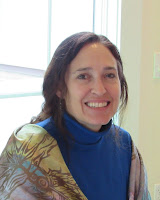NOFA MASS, CT NOFA, Biodiversity for a Livable Climate, Ecological Landscape Alliance, and NOFA Organic Land Care Program are coming together to energize all who work with and care about the soil and the health of our climate and to discuss soil carbon sequestration. The collaboration has resulted in our upcoming conference:
Landscape Heroes: Carbon, Water and Biodiversity and will take place at UMASS Amherst on January 31, 2017.
Please register at ELA's website at http://www.ecolandscaping.org/event/carbon-conference/ and use our promo code for CT NOFA and NOFA OLC members - carbon-conf-2016-nofa-olcp-members The cost is $79 for members, $99 for non-members and all walk-ins.
Special thanks to our Sponsor - Rincon- Vitova Insectaries, Inc.! Additional exhibitors will be present: Visionworks Books, Conway Landscape School, Perfect Earth Project, Green Earth Ag and Turf, Sodco and Pearl's Premium
Detailed Agenda with Speaker Pics
8:00 – 8:30am – Registration
8:30-8:35 Welcome and Overview
Morning Session Focus – Understanding Carbon in the Landscape.
 |
| Courtney White |
8:35-9:30am – Keynote: Courtney White – “2 Percent Solutions for the Planet”
Human activities have impacts. With better understanding humans can be positive agents for change as they choose how to manage their small corner of the world. Mr. White will delve it the soil carbon connection, carbon cycle and how soil, plants, animals, and the soil food web (diversity and complexity), and will show how human activity fits in.
 |
| T. Fleisher |
9:30-10:00 Eric T. Fleisher – Understanding Compaction
Severely compacted soil has poor structure and soil food web diversity which results in poor carbon harvesting. T. Fleisher will explain compaction causes and cures (across all managed landscapes).
10:00-10:30 Bryan O’Hara – Digging Deep into Soil Practices
Continuing the compaction discussion, Mr. O’Hara will focus on boosting soil biology with no-till farming, cover cropping, and Korean Natural Farming practices. The common thread is the focus on beneficial fungal growth and the role that Fungi play in carbon sequestration.
10:30-11:00 – Eric Toensmeier – Building Biodiversity
 |
| Eric Toensmeier |
Mr. Toensmeier will concentrate on biodiversity above ground to enhance carbon sequestration below ground in the form of diverse exudates and their effect on biological diversity in the soil food web. Toensmeier looks at perennial additions to conventional systems (herbaceous and woody) to further enhance soil food web complexity. This process results in greater carbon below ground and also results in carbon stored above ground in woody structures – in shrubs and trees.
11:00-11:15 Break
11:15-12:00 Moderated Panel with Morning Speakers White, Fleisher, O’Hara, Toensmeier
12:00- 1:15pm LUNCH (Organic lunch is included with registration)
Afternoon Session Focus – Humans as Agents for Positive Change Speakers offer their “Top 5 List” of what YOU can do!
1:15-1:45 – Paul Wagner – Understanding Soil Biology
 |
| Paul Wagner |
Learning to understand soil biology (the trophic levels) and how to make sure that at least the first three levels are present to build landscape health. Mr. Wagner will discuss specific techniques for making sure that they ARE present. Beyond the basics of bacteria and fungi, Mr. Wagner will help us to understand the third trophic level (the shredders, predators and grazers).
1:45-2:15 – Bruce Fulford – The Importance of Compost
Mr. Fulford explains compost from multiple feedstock streams and how to apply it for best long term soil stabilization. We will learn about the carbon release of traditional compost applications and how different feedstocks have different long term effects. Every plant pulls in carbon and we learn how to maximize the results.
 |
| Hugh McLaughlin |
2:15-2:45 – Hugh McLaughlin – Biochar’s Role in the Landscape
Creating biochar is an ancient technique brought forward in time to keep carbon both stabile and active in the soil for much longer than compost. What does it take to access and use modern biochar – and what is needed to inoculate it before large scale application. Dr. McLaughlin will help us to understand net Carbon – carbon sink, carbon neutral, carbon emitting – and how we can work toward the goal of becoming a carbon sink
2:45-3:15 – Chip Osborne – Turf – Ecological Options
Mr. Osborne takes a close look at how grass roots and their seasonal surging (expansion and
 |
| Chip Osborne |
contraction) can help to create soil. We learn to increase biodiversity by allowing broadleaved plants (weeds!) to mix into conventional turf and how this can heighten the quality of soil life supported by root exudates. With lawns covering large expanses of the landscape, even small changes can have a big impact.
BREAK (3:15 – 3:30)
3:30- 4:00 Moderated Panel with Afternoon Speakers Osborne, Wagner, McLaughlin, Fulford
4:00-4:30 – Wrap-up with Courtney White
One person makes a small contribution but many people, acting with intent and carbon awareness,

can make a much bigger contribution to carbon sequestration and global climate stability. Take the information from today and work it into all of your land management decisions – whether you’re managing (or helping to manage) a back yard, a farm, or an institutional land management program.
CEU Processing and Networking (4:30-5:00)
To find this agenda online, go to http://www.ecolandscaping.org/carbon-conference-agenda/















